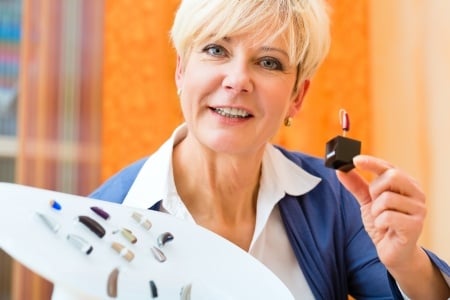Senior living communities and plenty of public places have taken pains to be more accessible for Americans with visible disabilities like physical handicaps. Handicapped bathrooms, wheelchair accessible seating, and handicap parking can be found at every retirement community and office building in America.
But not every impairment receives the same kind of consideration.
More than 37.4 million Americans live with a physical impairment that restricts their mobility—and of this group there are an estimated 300,000 adults who suffer from some form of hearing loss which impairs mobility as well. Yet the hearing impaired haven’t historically enjoyed as much active accommodation outside of the home.
Certainly, there is an awareness of hearing loss in the United States.
Advertisements for hearing services and specialists are plastered on billboards alongside every major highway and seem to run in every other commercial break. And who hasn’t been jokingly told to turn their hearing aid up after mishearing a friend?
But outside of jokes and advertisements, hearing loss is an “invisible” condition. Millions of impaired older Americans go through life with only limited acknowledgment from the abled and can rely on only measured accommodation when out and about or at home in their senior living communities.
- If you suffer from hearing loss, you often need to bring your condition to the attention of others—a step that many older adults can be reluctant to do—in order to receive proper consideration.
- Salespeople and servers will speak up if they notice or you tell them that you are hard of hearing, but they can become unintentionally condescending or quickly frustrated if they haven’t been trained in the proper etiquette.
- Entertainment like the performing arts and television programs sometimes offer interpretation or accommodation for those with hearing loss, but it isn’t something that the hearing impaired can always expect to find.
Luckily, legislation and technology are starting to fill in the gaps. Great strides have been made to improve senior living for older adults with hearing impairments—both within the home and out in the community.

Technology smooths the way for seniors with hearing loss.
Oftentimes it seems like the only readily available accommodation for the hearing impaired is limited to closed captioning or devices that can be bought for personal use like hearing aids or implantable devices.
Hearing aids enhance sound in a conversational setting, but are less effective out and about. Many hearing impaired older adults are unable to hear sounds clearly when they’re listening to a speech in an auditorium or an announcement over a loudspeaker—even if they have the latest digital hearing aid. Distance, background noise and echoes can all distort sound filtered through a hearing aid.
But all that is beginning to change.
The American Disabilities Act of 2010 has taken steps “to ensure that no individual with a disability is excluded, denied services, segregated or otherwise treated differently than other individuals” (§36.303), and public venues are required to offer auxiliary aids and services to Americans with hearing loss:
- qualified interpreters on-site
- video remote interpreting (VRI) services
- note-takers
- real-time computer-aided transcription services
- written materials
- exchange of written notes
- telephone handset amplifiers
- telephones compatible with hearing aids
- voice, text, and video-based telecommunications products and systems
- accessible electronic and information technology
Perhaps one of the most helpful technologies that a number of public places—from hotels to train stations—have begun to implement are assistive listening systems like hearing loops.
We’re looping in hearing impaired seniors across America.
At Marjorie P. Lee, we installed a system that makes it easier for our residents with hearing aids to participate in community events and enjoy musical performances.
Hearing loops are able to improve the quality of audio for hearing impaired older adults even when they’re in a noisy public setting by magnetically transferring sound from microphones or speakers directly to hearing aids and cochlear implants that have been fitted with tiny, inexpensive “telecoil” receivers.
Because the hearing loop connects directly with each resident’s hearing aids, without having to filter in from outside the device, assistive devices are transformed into in-the-ear loudspeakers that allows our residents to have crisper sound during programming and presentations that would have been difficult to hear even with the help of a hearing aid.











